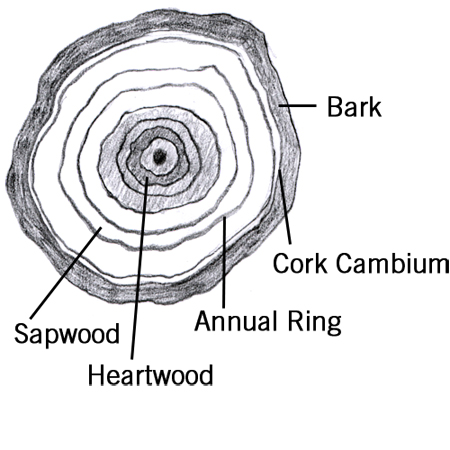The Maple Tree
Tree anatomy (cwf-fcf.org)
As temperatures rise in the spring, activity in the cells of a maple tree's cambium produces carbon dioxide. This carbon dioxide, when released into the intercellular spaces in the cambium, pressurizes the "chamber". Osmotic pressure from the presence of sugar and other substances dissolved in the sap also contributes to this positive pressure, causing sap to flow out through a tap hole.
During cooler periods when temperatures fall below freezing, the carbon dioxide cools and contracts. Negative pressure develops, drawing water into the tree from its roots and replenishing its sap. This allows it to flow again during the next warm period. Incredibly, these pressures can range from –10 psi to 40 psi (–68 kpa to 275 kpa). As long as a pattern of freeze and thaw continues, the production of maple syrup goes on uninterrupted; if it becomes too warm or too cold, however, production quickly drops.
The sap of sugar maples contains a higher concentration of sugar that the sap of other trees. This sugar is the product of the photosynthesis that occurred during the previous summer. The trees store the carbohydrates produced by photosynthesis in the form of starch. Starch is converted to sucrose (sugar) and dissolves in sap. Amino acids in the sap give maple syrup its distinctive flavour, which differs from that of pure sugar.
A single tap in one sugar maple tree can produce 30–60 litres of sap annually. At an average water to sugar ratio of 40:1, this will yield 0.75–1.5 litres of pure maple syrup.

